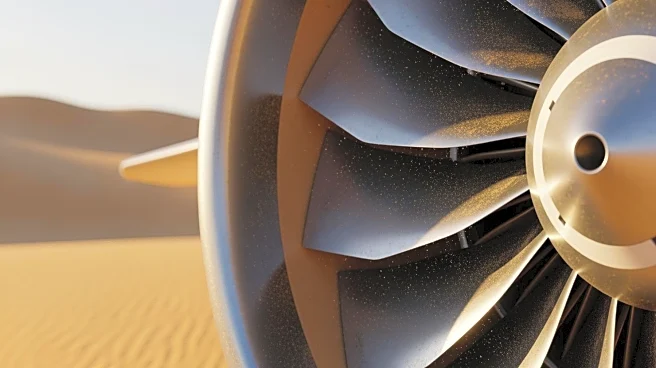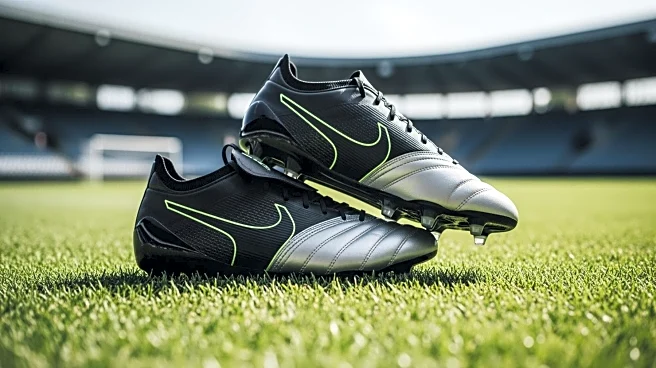What's Happening?
Rolls-Royce has successfully completed a series of dust-ingestion tests on its Trent XWB-97 engine, used in the Airbus A350-1000, at its Derby, England site. These tests are part of a broader initiative
to enhance the engine's durability, particularly in the harsh operating environments of the Middle East. The focus has been on improving high-pressure turbine blade and hot-section systems to counteract issues caused by atmospheric particulates, known as calcium-magnesium-alumino-silicate (CMAS). The upgrades aim to double the engine's time on wing in desert conditions and improve performance by 50% in more benign environments. The current phase of testing follows earlier efforts that increased temperature margins and introduced new HPT coatings. The initiative, launched in 2023, is set for certification in 2027 and entry-into-service in 2028.
Why It's Important?
The successful completion of these tests is significant for Rolls-Royce and its clients operating in the Middle East, as it promises enhanced engine reliability and reduced maintenance costs. By improving the Trent XWB-97's durability, Rolls-Royce is addressing a critical operational challenge faced by airlines in regions with high dust levels. This development not only strengthens Rolls-Royce's market position but also supports the operational efficiency of airlines using the A350-1000. The improvements could lead to increased sales in the Gulf region, where environmental conditions have historically impacted engine performance. Airlines stand to benefit from longer engine life and reduced downtime, translating into cost savings and improved service reliability.
What's Next?
Rolls-Royce plans further testing in 2026 to refine design changes, focusing on blade cooling patterns and conducting flight tests of the updated engine configuration. These tests will ensure that modifications do not adversely affect engine operability, such as relight performance or transient performance. The company aims to make these durability enhancements seamless for pilots and airframers, ensuring that the changes do not introduce new operational issues. Successful implementation of these upgrades will likely bolster Rolls-Royce's sales campaigns for the A350-1000 in dust-prone regions, enhancing its competitive edge in the aerospace market.
Beyond the Headlines
The advancements in the Trent XWB-97 engine reflect broader trends in aerospace engineering, where environmental factors are increasingly influencing design and operational strategies. As airlines seek to optimize performance in diverse climates, manufacturers like Rolls-Royce are investing in technology that addresses specific regional challenges. This focus on environmental adaptability may drive future innovations in engine design, potentially leading to more sustainable and efficient aviation solutions.













